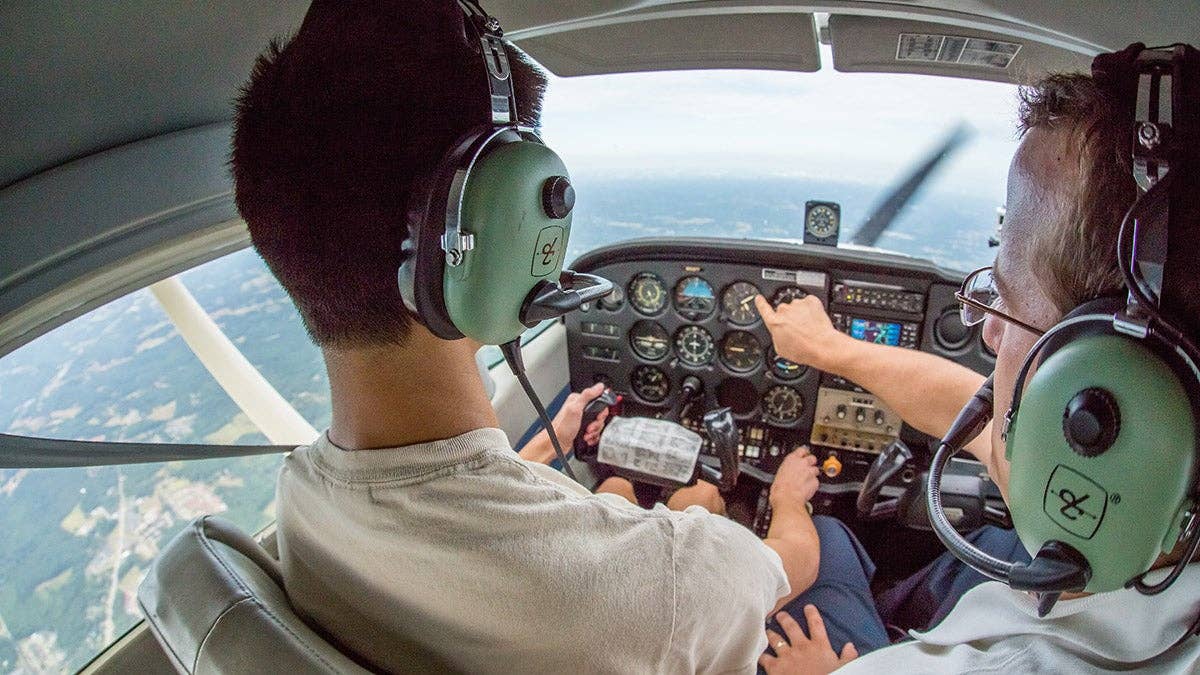Setting Right Pace of Flight Training Is Key to Success
Flight training is not a one-size-fits-all. Here are some tips to keep up momentum.

Flight training is not a one-size-fits-all commodity. [Credit: Derek Eckenroth/ file photo]
There are a lot of student pilot dropouts who quit flight training because they were overwhelmed by the pace of it.
Often they were enrolled in Part 141 programs, which stress rapid skill and knowledge acquisition. While these programs do turn out pilots, they're not for everyone.
They certainly weren't for one of my former clients who decided to get back into training but was adamant that it be done under Part 61. He had such a bad experience with Part 141 that when I pulled out the Jeppesen Private Pilot Syllabus, he recoiled as if I had pulled a live rattlesnake from my bag.
He said he'd been enrolled in a Part 141 program for the better part of a year, and his CFI was angry with him because he wasn't making fast enough progress. He had logged approximately 30 hours but still had not soloed.
The CFI had been taken to task by the chief instructor for this, and the CFI took it out on the flight student. He told him, "You're making it really hard for me," as if the learner was intentionally having trouble learning.
The student asked for a change of instructor. This made the CFI angry, and the learner quit. I don't blame him. I would too if I was paired with a narcissist like that. The CFI is supposed to adjust to the learner’s needs, not the other way around.
Pace of Instruction
To instructors: The first task when working with a new-to-you student is determining the pace of instruction. When fatigue manifests, it is time to terminate the lesson.
For example, the first stage of the syllabus might have four new items to teach in a one-hour lesson, but that pace may be too much for the learner who gets buried 42 minutes into the hour. The minute saturation is reached, it's time to review maneuvers previously learned or return to the pattern for takeoffs and landings.
If they fly on a consistent basis, the learner's endurance should increase. I always point this out to them, because it's an improvement metric that needs to be recognized.
Saturation "tells" vary from student to student. The CFI may need to repeat themselves. The learner may get sloppy with altitude or heading—these are all signs of fatigue.
Pacing needs to be determined for ground lessons as well. The CFI can rattle off information like a squirrel on the backside of a dozen Red Bulls, but that doesn't help the learner absorb the information any faster.
It can go the other way too. There are programs where the CFIs are cautioned to "teach slowly" to stretch out the training. I have worked at schools where this is the standard operating procedure.
Private pilot ground school consisted of five hours a week stretched out over 12 months with breaks of several weeks thrown in a few times a year allegedly to "help maintenance catch up." I always worried about the learners losing what had been taught because when you don't keep your mind engaged, you can forget. Very often the first week back after a long break required review in the classroom and cockpit.
Learner Sets the Pace
Flight training is not a one-size-fits-all commodity. This will become blatantly obvious if you enroll in one of the larger Part 141 aviation programs.
On the first day of classes, you might find yourself sitting in an auditorium with other new students. You will be told to look to the left, then to the right, and advised, "At the end of the year one of those people won't be here anymore." It's not that they aren't good students or can't learn, it's that the pace may not be right for them.
Please keep in mind that if you are aspiring to an aviation career, the FAA and your future employers aren't really going to care if you came up through Part 141 or Part 61. The only thing they will care about is that you have the experience and skills to do the job.
Mix Up Training
One way to keep the learners moving forward is to stagger lessons so that some new material is followed by lessons that are all review. I often use a 3-1e ratio for this, especially for the pre-solo candidates. Three lessons of new material followed by a review lesson with them demonstrating what they have learned so far seems to keep them on task.
When there are new maneuvers to learn, I find it useful to end the lesson in the practice area by demonstrating something that will be taught in the next lesson. I ask the student to try it once, then we head back to the pattern. The learner's homework is to find out all they can about that maneuver and when it would be appropriate to use outside the training environment. It can have some surprising—and favorable results.
Once, after I taught forward slips to a particular young man, he returned for the next lesson very excited to tell me that his grandfather, who flew a J-3 Cub as a young man, told him slips were always used to land because Cubs do not have flaps.
We were flying a Cessna 172, which had electrically actuated flaps. The student informed me we would use a slip to land if the electrical system failed. Learning had taken place.

Sign-up for newsletters & special offers!
Get the latest FLYING stories & special offers delivered directly to your inbox






